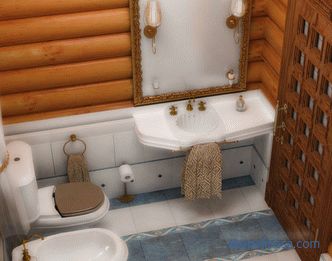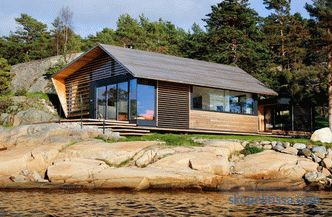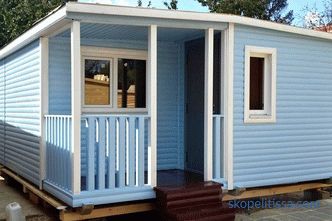Drainage systems are used for landscaping a country site in many countries of the world. Such structures allow not only to prevent the destruction of the foundation, but also to ensure the irrigation of plants on the site. It should be remembered that such a system will work well only if there is a well-designed project.
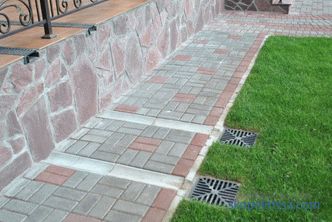
Designing a drainage system for a country site: types of structures
Designing drainage systems should be based on the tasks. This will optimize drainage functions, as well as select optimal structural elements. The creation of project documentation is carried out in accordance with generally accepted requirements and norms of SNiP.
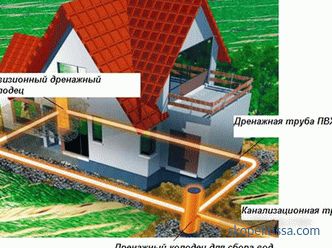
The project begins with a hydraulic calculation that includes the catchment area and the flow rate. The calculation of these components allows you to determine the amount of moisture that is collected from a unit area (the territory in which there is drainage). It is worth noting that the accumulated drainage water can either accumulate in a specific tank and undergo purification, or be removed outside the site. The water purified in special capacity perfectly will be suitable for watering of plants in dry weather. Before you make a project, you need to decide: what type of drainage system will be built and what materials will be required for this.
Constructions of water diversion are:
- open;
- closed.
On our site you can find contacts of construction companies that offer the service of designing and installing sewage and water supply. Directly to communicate with representatives, you can visit the exhibition of houses "Low-rise Country".
Open drainage systems
Open or surface drainage systems are installed in areas with the most water accumulation on the surface. The main elements used are stormwater inlets. The pipes are installed on the section at an angle; a line is created that is connected to one common pipe. Then the water is removed for the territory of the house or is collected in the tank.
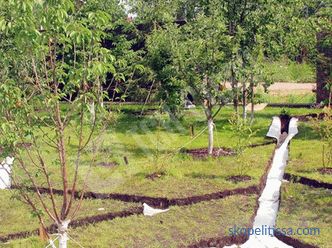
Designing drainage systems of this type of water drainage implies siphon partitions in the pipes. Such designs will prevent the spread of unpleasant odors from the drainage.
In addition to pipes, trays, gutters and canals will also be needed to construct an open wastewater disposal mechanism. The diameter of these components is selected depending on the diameter of the main structural elements.
Closed drainage systems
Closed systems differ significantly from open systems by design complexity, by the presence of more complex structures and functions. If the surface structures are designed for the discharge of thawed and rainwater, then the deep ones allow to avoid the accumulation of water in the soil. The construction of such a system begins with the installation of a special well in which water will accumulate. The best option would be a container made of polymer. Reinforced concrete rings can also be used as a well.
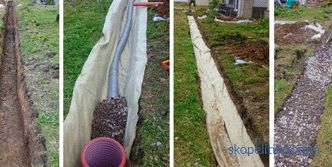
Important! Reinforced concrete rings are much worse at handling fluid accumulation than polymeric wells. In addition, the former can be destroyed more quickly and retain moisture much worse. Thus, reinforced concrete blocks will serve much less than the polymer analog.
The creation of a deep drainage system consists of several stages:
- installation of a collector well for collecting water;
- preparing trenches for laying drainage pipes;
At this stage it is necessary to prepare the soil in places where the sand cushion, geotextile fabric, gravel and pipes will be laid in the future. It should be noted that pipe trenches should be dug under a slight slope. This is necessary in order to better pass the water through the pipes and collect it in a special tank. If it is impossible to create a slope, the layout takes into account the presence of an additional element of the system (pump for drainage).
- creating a layer of sand and compacting it;
- laying a layer of geotextile, gravel and pipes;
Pay attention! Experts recommend that when creating a drainage system take into account the fact that at the corners of the building pipes make a turn of 90 degrees. This fact impedes the movement of water along the structure. Thus, the best option when creating a drainage project is to use additional water collection tanks, which will be located on each of the turns around the building.
- Next, you need to cover the pipes with a layer of gravel, wrap them up and cover them with sand.
An additional layer of sand is used to prevent rapid erosion of the soil during freezing and thawing. Above the building is filled with soil.
It might be interesting! In the article on the following link read about drainage without rubble.
Details about the types of drainage systems are described in this video:
Project Creation: Preparation and Process
Project of the site’s drainage system often requires a lot of preparatory work. Depending on the hydraulic characteristics of the soil at the site, specialists select the necessary materials for the work and their quantity, which significantly reduces the expenses for the acquisition of system components. Hydraulic calculations are carried out on the basis of:
- The degree of permeability of soil and solid rocks that prevail in the territory of the site.
- Soil resistance to leaching of nutrients.
- Average rainfall. This indicator is calculated for a specific time of year separately, for a specific region.
- Groundwater levels and their composition.
- Features of the location of underground water sources and their activity.
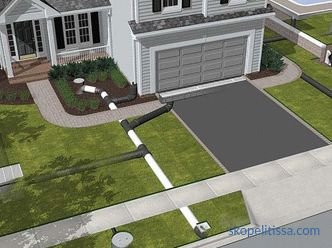
It is worth noting that a standard project is most often used for country sites. Designing drainage systems is often necessary in areas with a special climate, the presence of many different factors that can significantly affect the quality of life of residents. For example, the creation of a project for the drainage of the foundation often requires suburban areas in the highlands.
In addition to all the above rules, when creating a layout plan for a structure, it is also worth considering the topography and the places of the largest accumulation of water. This will determine in which direction the slope of the drainage system will be performed, and increase its efficiency.
Basic rules and norms SNiP
There are several building codes that govern the design of drainage and its installation in the future, these are documents: 2. 06. 15-85 and 2. 04. 03 -85. In order for the design of drainage to be most effective, when creating a project and translating it into reality, it is necessary to take into account all the points from the specified rules. Experts who have experience in carrying out installation work, are well aware of these rules. Thus, it is better to entrust the creation of a project and installation to professionals.

The basic rules for the construction of a water collection mechanism include:
- use of pipes that are resistant to moisture (plastic or ceramic products);
- the slope to the water collection point should be 0. 5-0. 7% of the pipe diameter;
- presence in the construction of inspection wells (this is often forgotten by the owners of sections that construct the system on their own, without this rule, pipes are often blocked);
- pipes should be placed along the building ;
- if there is a basement in the house, vertical drainage is needed;
- the upper edge of the pipe should protrude slightly behind the lower part of the foundation;
- technical documentation is mandatory when building quality and reliable drainage system.
This may be interesting! In the article, on the following link, read about drainage pipes for the drainage field of a septic tank.
Conclusion
Thus, designing the drainage system of a site is a goal that requires performing many tasks, the solution of which is best entrusted to professionals.
Rate this article, we tried for you

